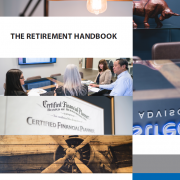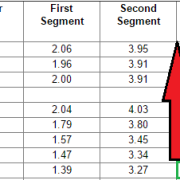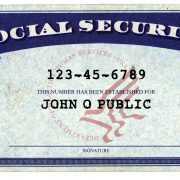The Solo 401k
The Solo 401k
A retirement savings vehicle designed for the smallest businesses.
A solo 401(k) lets a self-employed individual set up a 401(k) plan combined with a profit-sharing plan. You can create one of these if you work for yourself or for you and your spouse.(1)
Reduce your tax bill while you ramp up your retirement savings. Imagine nearly tripling your retirement savings potential. With a solo 401(k), that is a possibility. Here is how it works:
*As an employee, you can defer up to $18,500 of your compensation into a solo 401(k). The yearly limit is $24,500 if you are 50 or older, for catch-up contributions are allowed for these plans.(1)
*As an employer, you can have your business make a tax-deductible, profit-sharing contribution of up to 25% of your compensation as defined by the plan. If your business isn’t incorporated, the annual employer contribution limit is 20% of your net earnings rather than 25%. If you are a self-employed individual, you must calculate the maximum amount of elective deferrals and non-elective contributions you can make using the methods in Internal Revenue Service Publication 560.(1,2)
*Total employer & employee contributions to a solo 401(k) are capped at $55,000 for 2018.(1)
Are you married? Add your spouse to the mix. If your spouse is a full-time employee of your business, then he or she can also make an employee contribution to the plan in 2018, and you can make another profit-sharing contribution on your spouse’s behalf. (For this to happen, your spouse must have net self-employment income from the business.)(2,3)
The profit-sharing contributions made by your business are tax-deductible. Annual contributions to a solo 401(k) are wholly discretionary. You determine how much goes in (or doesn’t) per year.(2,4)
You can even create a Roth component in your solo 401(k). You can direct up to $5,500 annually (or $6,500 annually, if you are 50 or older) into the Roth component of the plan. You cannot make employer contributions to the Roth component.(3)
Rollovers into the plan are sometimes permitted. Certain plan providers even allow hardship withdrawals (loans) from these plans prior to age 59½.(5)
There are some demerits to the solo 401(k). As you are setting up and administering a 401(k) plan for your business, you have to see that it stays current with ERISA and IRC regulations. Obviously, it is much easier to oversee a solo 401(k) plan than a 401(k) program for a company with 15 or 20 full-time employees, but you still have some plan administration on your plate. You may not want that, and if so, a solo 401(k) may have less merit than a SEP or traditional profit-sharing plan. The plan administration duties are relatively light, however. There are no compliance testing requirements, and you will only need to file a Form 5500 annually with the I.R.S. once the assets in your solo 401(k) exceed $250,000.(4)
If you want to hire more employees, your solo 401(k) will turn into a standard 401(k) plan per the Internal Revenue Code. The good news is that you can present your new hires with an established 401(k) plan.(2,3)
On the whole, solo 401(k)s give SBOs increased retirement savings potential. If that is what you need, then take a good look at this option. These plans are very easy to create, their annual contribution limits far surpass those of IRAs and stand-alone 401(k)s, and some custodians for solo 401(k)s even give you “checkbook control” – they let you serve as trustee for your plan and permit you to invest the funds across a variety of different asset classes.(5)
Justin D. Rucci, CFP®
Wealth Advisor
Warren Street Wealth Advisors
Justin D. Rucci is an Investment Advisor Representative of Warren Street Wealth Advisors, a Registered Investment Advisor. Information contained herein does not involve the rendering of personalized investment advice, but is limited to the dissemination of general information. A professional advisor should be consulted before implementing any of the strategies or options presented.
This material was prepared by Marketing Pro, Inc. Any investments discussed carry unique risks and should be carefully considered and reviewed by you and your financial professional. Past performance may not be indicative of future results. All investment strategies have the potential for profit or loss. Changes in investment strategies, contributions or withdrawals may materially alter the performance, strategy, and results of your portfolio.Historical performance results for investment indexes and/or categories, generally do not reflect the deduction of transaction and/or custodial charges or the deduction of an investment-management fee, the incurrence of which would have the effect of decreasing historical performance results.Economic factors, market conditions, and investment strategies will affect the performance of any portfolio and there are no assurances that it will match or outperform any particular benchmark. Nothing in this commentary is a solicitation to buy, or sell, any securities, or an attempt to furnish personal investment advice. We may hold securities referenced in the blog and due to the static nature of content, those securities held may change over time and trades may be contrary to outdated posts.
Citations.
1 – irs.gov/retirement-plans/one-participant-401k-plans [10/25/17]
2 – mysolo401k.net/solo-401k/solo-401k-contribution-limits-and-types/ [2/13/18]
3 – doughroller.net/retirement-planning/solo-401k-best-retirement-plan-self-employed/ [5/21/17]
4 – tdameritrade.com/retirement-planning/small-business/individual-401k.page [2/13/18]
5 – thecollegeinvestor.com/18174/comparing-the-most-popular-solo-401k-options/ [12/11/17]







